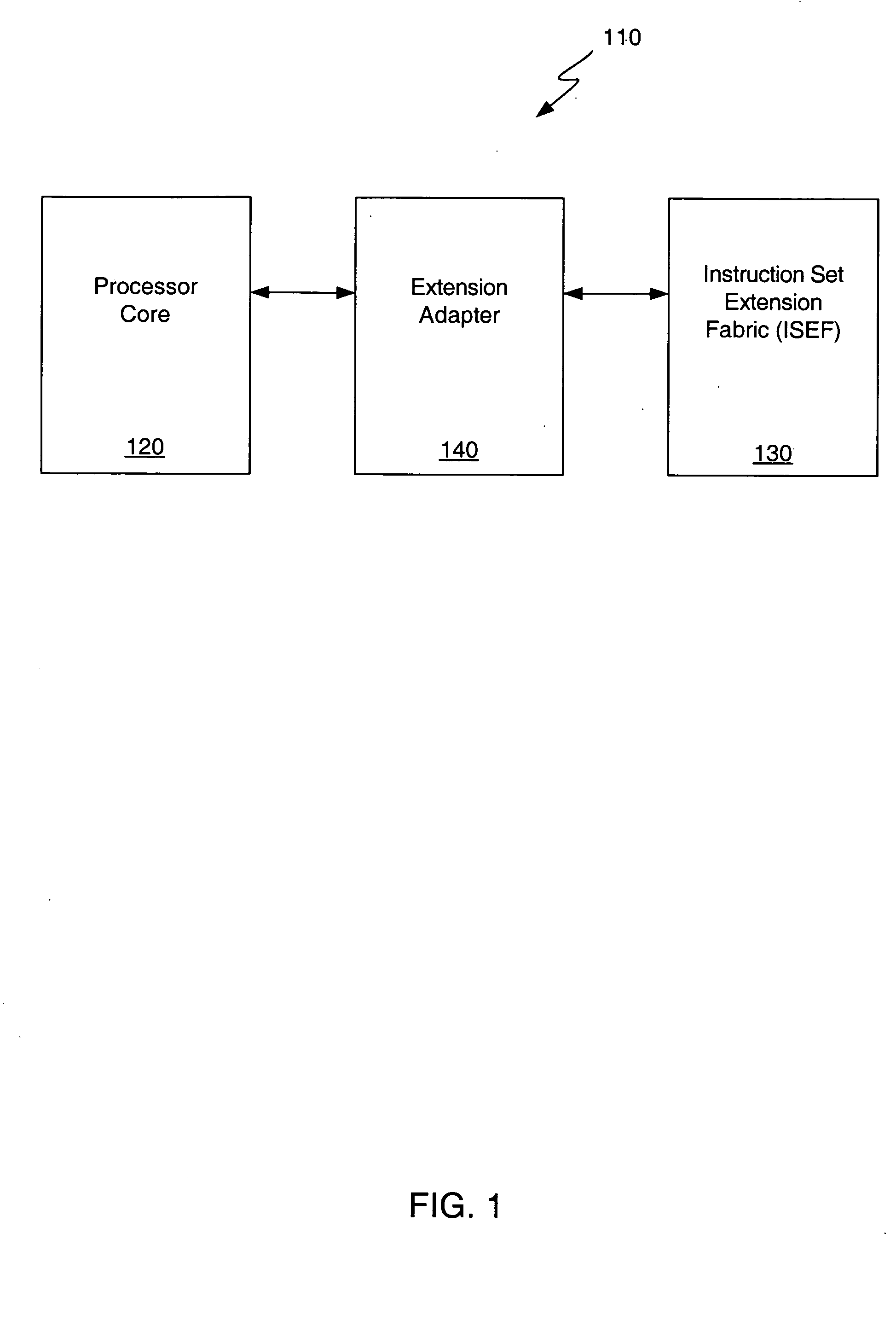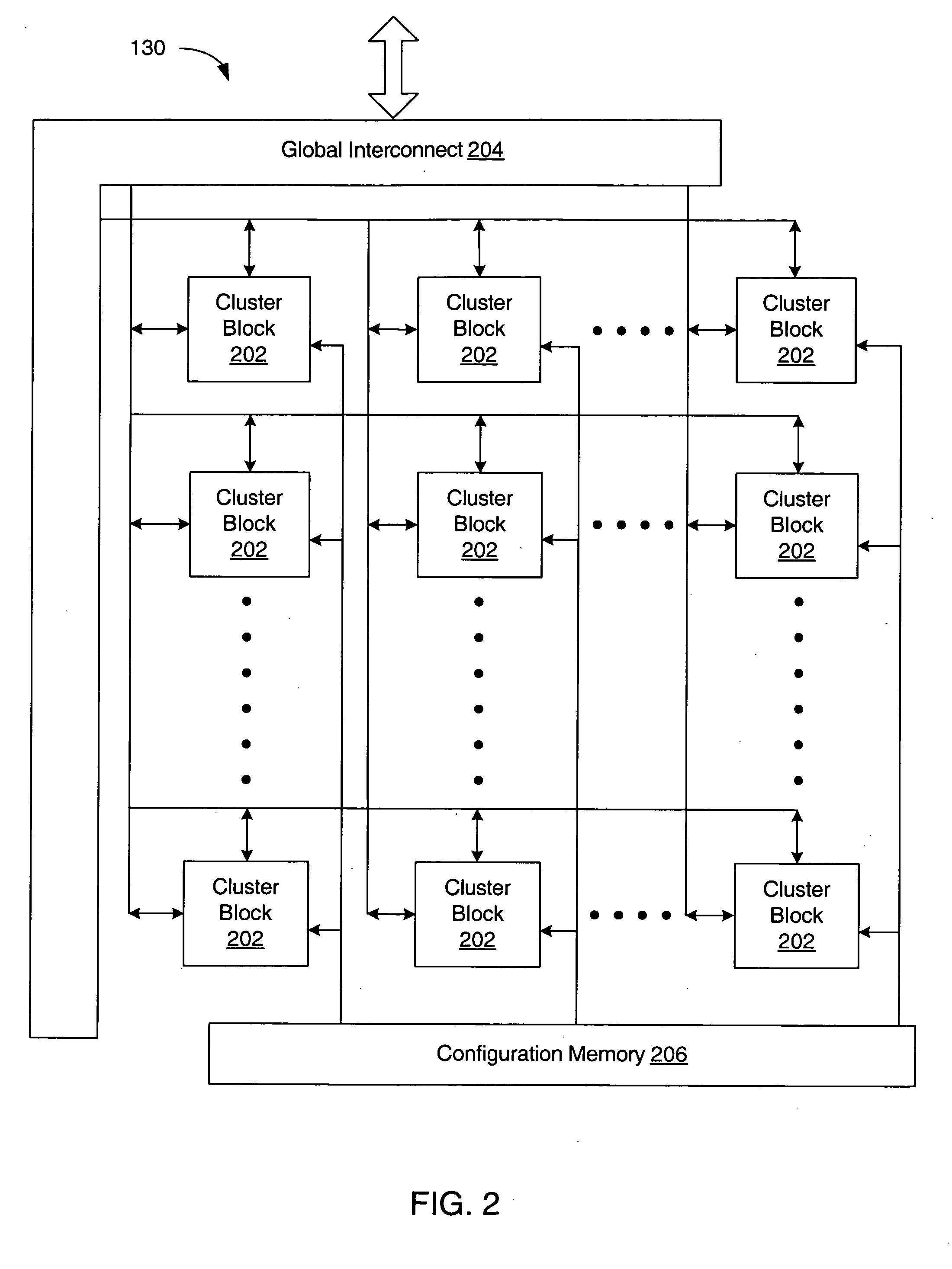Reconfigurable instruction set computing
a computing and reconfigurable technology, applied in the field of reconfigurable instruction set computing, can solve the problems of not being able to extend the instruction set of the processor to include new instructions, and only adding instructions prior to the fabrication of the processor,
- Summary
- Abstract
- Description
- Claims
- Application Information
AI Technical Summary
Problems solved by technology
Method used
Image
Examples
exemplary embodiment 600
FIG. 6 is a flow chart illustrating an exemplary embodiment 600 of the method of the invention. The method begins by defining a program in step 610. The program can be defined in a standard programming language that is familiar to computer programmers such as C++.
Thereafter, in step 620, the program is compiled to convert the program from the programming language in which it was written into a machine language that is recognizable by the processor core 120 (FIG. 1). It will be appreciated that the present method is intended to be iterative, as can be seen from FIG. 6, and that successive iterations initially return to step 620. Whereas in the first pass through step 620 a standard compiler, such as a C++ compiler, compiles the program, in successive iterations an additional extension compiler is also employed, as is discussed elsewhere herein. One skilled in the art can appreciate that the extension compiler can be implemented as a separate program or may be part of the compilation...
second embodiment
ISEF 130 configuration is explicit reconfiguration. Explicit reconfiguration is a configuration or reconfiguration of the ISEF 130 in which the executing application program directly initiates the loading of the ISEF 130 configuration memory 206 with instruction extension data in the form of a system call or similar invocation. In one explicit reconfiguration embodiment, the application preferably prefetches instruction groups before they are required to optimize application execution performance. In the explicit reconfiguration embodiments, the programmer of the application explicitly adds code to the application to load instruction extension data into the ISEF 130 configuration memory 206. The added coded includes the system call or similar invocation to initiate the loading of the ISEF 130 configuration memory with the instruction extension data. Alternative embodiments featuring explicit reconfiguration permit direct memory access (DMA), allowing the prefetch to take place concu...
third embodiment
A third embodiment for configuring the ISEF 130 is that of implicit reconfiguration. Implicit reconfiguration occurs when the running application program issues an instruction, which is not part of the resident instruction set. When a nonresident instruction is issued in this embodiment, the extension adapter 140 detects this instruction fault condition and passes the instruction extension to the ISEF 130 for reconfiguration and execution. This model of reconfiguration is referred to as implicit, because the processing system 110 relies on the extension adapter 140 to detect and process the need for the ISEF 130 operation. Programmers of the applications therefore do not need to be aware of the reconfiguration of the ISEF 130 because the reconfiguration does not depend on the programmer-inserted code in the program for reconfiguration. Instead, the reconfiguration of the ISEF 130 occurs when the extension adapter 140 detects the instruction fault condition.
Referring now to FIGS. 8(...
PUM
 Login to View More
Login to View More Abstract
Description
Claims
Application Information
 Login to View More
Login to View More - R&D
- Intellectual Property
- Life Sciences
- Materials
- Tech Scout
- Unparalleled Data Quality
- Higher Quality Content
- 60% Fewer Hallucinations
Browse by: Latest US Patents, China's latest patents, Technical Efficacy Thesaurus, Application Domain, Technology Topic, Popular Technical Reports.
© 2025 PatSnap. All rights reserved.Legal|Privacy policy|Modern Slavery Act Transparency Statement|Sitemap|About US| Contact US: help@patsnap.com



